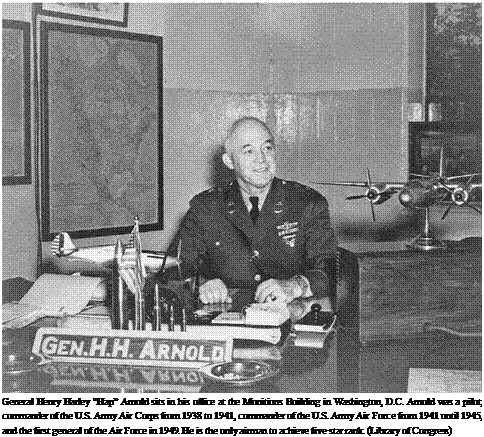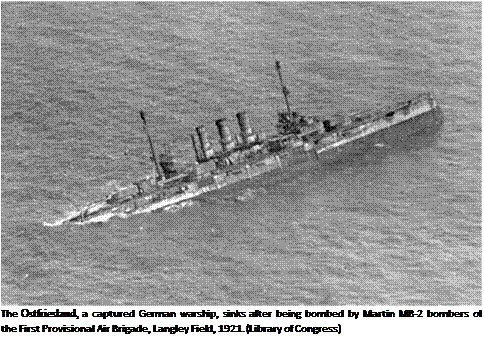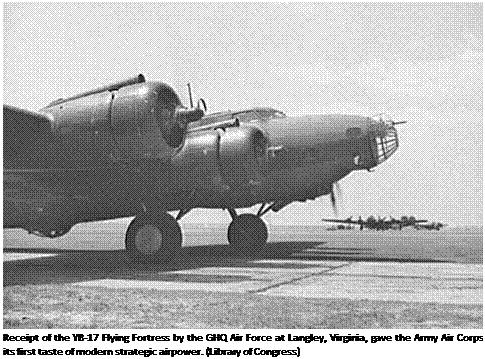1920
FEBRUARY 22 At San Diego, California, Lieutenant W. D. Coney makes the first solo transcontinental flight by flying his DH-4B to Jacksonville, Florida, in 22 hours, 27 minutes. This is also one of the earliest mail-service flights.
FEBRUARY 25 At Langley Field, Virginia, the first Air Service School is established; it becomes the Air Corps Tactical School in July 1926.
FEBRUARY 27 Over Dayton, Ohio, a Packard-LePere LUSAC 11 biplane flown by Major R. W. Schroeder reaches a world-record altitude of 33,114 feet. The aircraft is powered by a modified Liberty 400 engine.
May 1 At Dayton, Ohio, the GA-1 tri
plane, the Army’s first armored aircraft, debuts. This twin-engined bomber is heavily armed with eight machine guns and a 37mm cannon, but only flies at 105 miles per hour; it does not enter production.
May 14—16 At Bolling Air Field, Washington, D. C., the first Army Air Tournament, which features several captured German aircraft, draws a crowd of
10.0 people.
June 4 In Washington, D. C., Congress
passes the Army Reorganization Bill of 1920, which grants the Air Service permanent status on par with the infantry, cavalry, and artillery. The military rating of “airplane pilot” also arises, with authorized flight pay of 50 percent above existing base pay. Furthermore, the Air Service is authorized 1,514 officers and
16.0 enlisted men.
June 5 To ease competition fears from
the Navy, Congress passes legislation restricting the Air Service to land bases.
June 8 Over San Antonio, Texas, Lieutenant John H. Wilson makes an unofficial world-record parachute jump from 19,861 feet.
June 11 At Langley Field, Virginia, Wind Tunnel 1, which is only five feet in length, is successfully tested. Results obtained convince the National Advisory Committee for Aeronautics (NACA) that a larger device is necessary for meaningful results.
June 28 Army and Navy representatives are encouraged by NACA to enroll air officers to the Massachusetts Institute of Technology (MIT) to study aeronautical science; among those assigned there is James H. Doolittle, who garners a doctorate.
July 1 In Ohio, the Wright Aeronautical Company constructs a Hispano-Suiza airplane engine capable of firing a 37mm cannon shell down the propeller shaft.
July 15-October 20 At Mitchel Field, New York, four DH-4Bs under Captain St. Clair Streett fly to Nome, Alaska, and back; the trip covers
9,0 miles and is successfully concluded.
September 11 At Langley Field, Virginia, three airships fly under radio communication and are directed while aloft and still in formation.
October 3 On the Potomac River near Washington, D. C., a Huff-Daland HD-4 Bridget aircraft flown by Lieutenants Godfrey L. Cabot and Harold R. Harris retrieves a five-gallon can of gasoline from a float. This constitutes an early attempt at in-flight refueling.
OCTOBER 20 At Mineola Field, New York, a flight of four aircraft under Captain St. Clair Streett, who departed on the previous July 15, returns after a record 9,000-mile flight to Alaska and back. Streett wins a Mackay Trophy along with the Distinguished Flying Cross for his efforts.
November 1 At Langley Field, Virginia, Major Thomas DeWitt Milling assumes command of the Field Officers School, a precursor of the Air Corps Tactical School at Maxwell Field, Alabama. It arises to create new air doctrines and tactics for fast-changing times.
November 25 At Mitchel Field, New York, Lieutenant Corliss C. Moseley, flying a Verville-Packard 600, wins the first Pulitzer Air Race at an average speed of 156.5 miles per hour.














